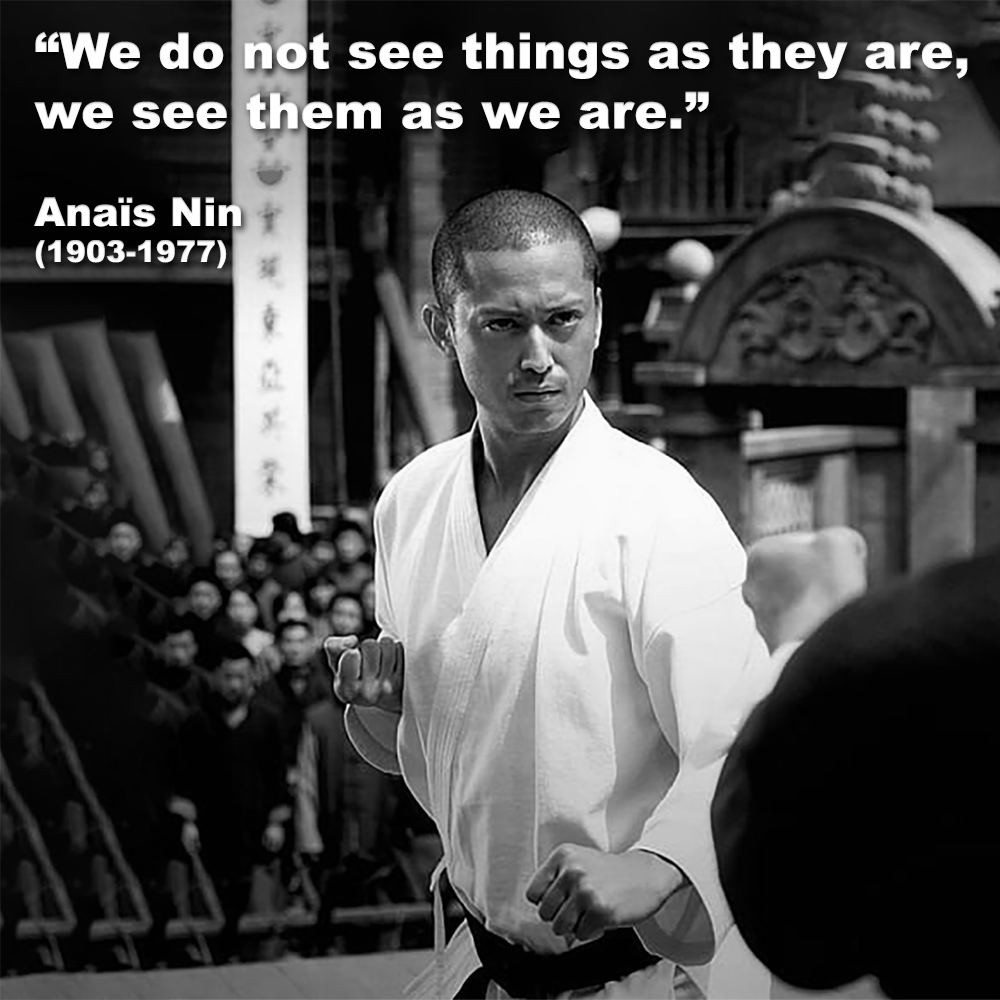
"We do not see things as they are, we see them as we are." - Anaïs Nin
Posted by ADAM CARTER on APR 13, 2024

"We do not see things as they are, we see them as we are." - Anaïs Nin
(2 minute 30 second read)
Many of the articles that I write are created to ask the reader to view, perhaps something different, and discuss the content in a polite discussion.
Yeah right, who am I kidding? This is social media.
An opinion is this: the beliefs of a single person based on that individual’s experiences and observations of a given situation and/or topic.
The martial arts, particularly karate, have a mass of different opinions on what it actually is.
Should we differentiate one form of karate from another, rename it perhaps? As an example: Sport Karate, Children’s Karate, Practical Karate, 3K Karate etc? (Which box would your karate fit into?)
In my humble opinion, there needs to be differentiation. Especially when discussing what it is you actually practice or teach.
Why?
Because ‘karate’ today cannot tick ‘all’ the boxes for everyone. And there is often a misunderstanding when trying to have discussions about what works for one and what works for another.
Just to be clear – my classes, my writing, comes down on the more pragmatic side of karate.
I believe that you have to contextualize your training. Practitioners and followers really need to know the difference between sport, karate for children, dojo sparring/fighting (with all its iterations), pragmatic karate and the many others that are out there.
Unfortunately there are so many people that just don’t understand the differences. Some don’t want to understand, they are fine with what they know.
If you want to train for consensual fighting, dojo sparring, for sporting competition etc, then that’s great. It can be amazing fun. Just realize and truly understand the differences and train (and comment) accordingly.
There’s no one-size-fits-all approach to learning. If your current method feels right for you, keep at it! But remember, every method has its limits. To truly deepen your understanding, it’s valuable to be aware of these limitations and choose the right approach for the situation.
As an example here are a few of the comments I received on my recent article, it literally made the hair on the back of my neck stand up!
“It’s a basic exercise for beginners. It’s not supposed to be effective.”
“Teach them what you like as long as they get to shodan as that’s when they begin to learn anyway.”
“…stepped backwards in an attempt to avoid the attack and give your opponent time to change his mind.”
“What if you are attacked with a sword? Then moving backwards (5 times) works”.
“…it’s just to build leg muscles and balance.”
Okay, I understand everyone has a right to teach exactly how they want to, however, there has to be standards, surely.
While the physical movements of karate might appear similar at first glance, the context and purpose behind them need to reveal the type of karate being practiced.
By understanding these indicators, you can move beyond just seeing the movements and start to appreciate the specific goals and applications of the karate being practiced.
While karate practice offers numerous benefits, certain instructional approaches raise concerns. Dismissive attitudes towards foundational techniques, such as stating “it’s not supposed to be effective” or “it’s just to build leg muscles”, or prioritizing rank over practical skills, can be a disservice to karate as a whole.
Surely karate’s primary aim is to enable students to defend themselves effectively.
It is evident that the path to proficiency is as varied as the practitioners themselves, and amidst the array of practices and methodologies, one fundamental question persists: what truly defines the essence of karate (and do you care)?
